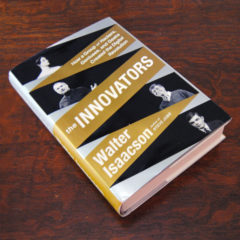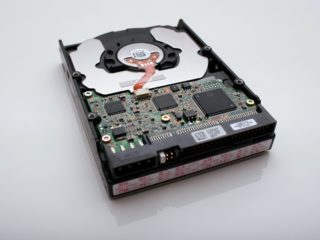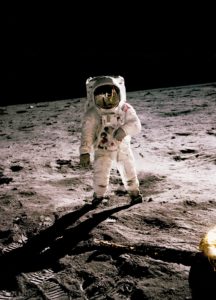
I always take notes when I read a book. Part of it comes from wanting the ability to add quotes to the reviews I write, but the bigger picture reason is because sometimes I like to go back to those notes and see them at a later date. By actually being able to read through a small document with all the quotes I pulled, I’ll find the one I remember, and it’s easier than paging through and rereading a whole page.
I bring this up because the notes I collected from reading The Innovators: How a Group of Hackers, Geniuses, and Geeks Created the Digital Revolution by Walter Isaacson are more than a lot of the other books I have recently read, even some on the same subject. The reason? Well, while some of the books I’ve read on technology, of late, cover a certain piece of history or focus on a certain person, this book goes from Ada Lovelace and Charles Babbage with the Analytical Engine, through the two Steves (Jobs and Wozniak) with Apple and Bill Gates’ Microsoft, to Steve Case and AOL, right up to Larry and Sergey and Google, with many more inventions, people, and concepts in between. This all leads to where we are now as far as technology; computers, chips, networks, artificial intelligence, and where we may yet be going.
That’s a lot of ground to cover and Isaacson does it with such panache, that you really get details, not just the story point bulletins, from every stop along the timeline from 1843 to 2011.

There are more threads in this book than where art and science meet. Innovation for one, because it’s not called “The Innovators” by happenstance. And what do we learn about innovation within the pages of this book? A lot.
- Innovation is almost never singular and rarely happens in a vacuum.
- “Innovation requires articulation.”
- “Once again, the greatest innovation would come not from the people who created the breakthrough but from the people who applied them usefully.”
- “Sometimes innovation is a matter of timing. A big idea comes along at just the moment when the technology exists to implement it.”
- “Innovation can be sparked by engineering talent, but it must be combined with business skills to set the world afire.”
There’s also quite a bit about invention, two lines I feel are worth mentioning; “An invention, especially one as complex as the computer, usually comes not from an individual brainstorm but from a collaboratively woven tapestry of creativity.” and a quote from Ev Williams of Blogger and Twitter fame in which he said “People don’t invent things on the Internet. They simply expand on an idea that already exists.”

But as with any historical non-fiction, it’s about understanding where we came from. And Isaacson again succeeds. He even manages to turn me around on the importance of events that happened in 1969 with a parenthesis in the following excerpt; “It was thus that in the second half of 1969–amid the static of Woodstock, Chappaquiddick, Vietnam War protests, Charles Manson, the Chicago Eight trial, and Altamont–the culmination was reached for three historic enterprises, each in the making for almost a decade. NASA was able to send a man to the moon. Engineers in Silicon Valley were able to devise a way to put a programmable computer on a chip called a microprocessor. And ARPA created a network that could connect distant computers. Only the first of these (perhaps the least historically significant of them?) made headlines.”

Throughout the course of history there are events that happen that appear more impactful at the time then they are. We have not returned to the Moon with a human since 1972, in fact, humans haven’t really been out of high Earth orbit much, but we have utilized the microprocessor to upgrade our “man-computer symbiosis” in our computers and we have created an expanding network of those machines.
This is not your typical “here’s the history” book. It makes you think along the way, displaying the successes, failures, and almost was pieces of information to give you a more complete story. But in the almost was and in the theory, there is a whole lot of different philosophies, some which turned out to be spot on, and some which are still being argued over. But in order to pick a side, you first need to have all the facts, and Walter Isaacson’s The Innovators is a great place to start.